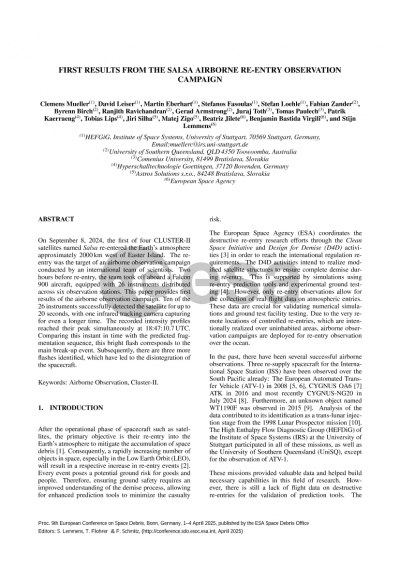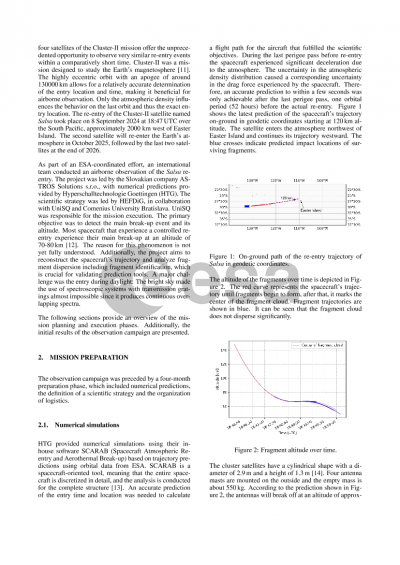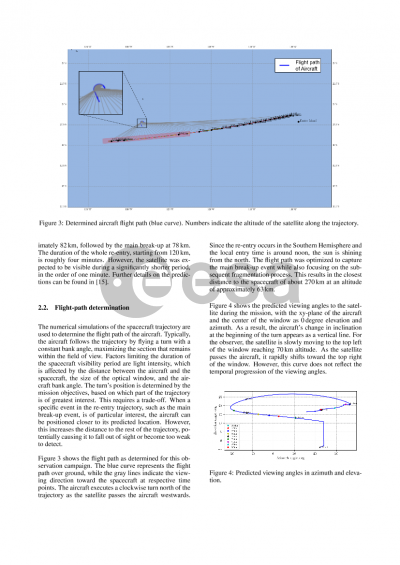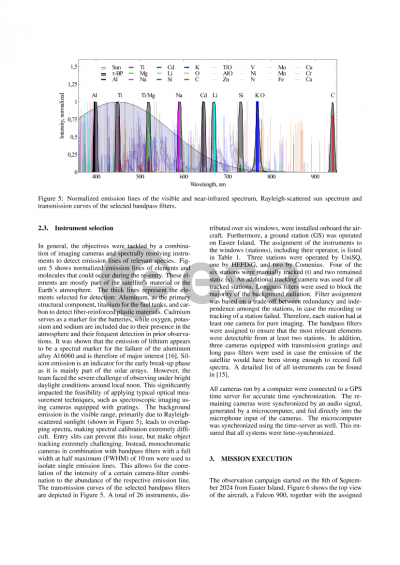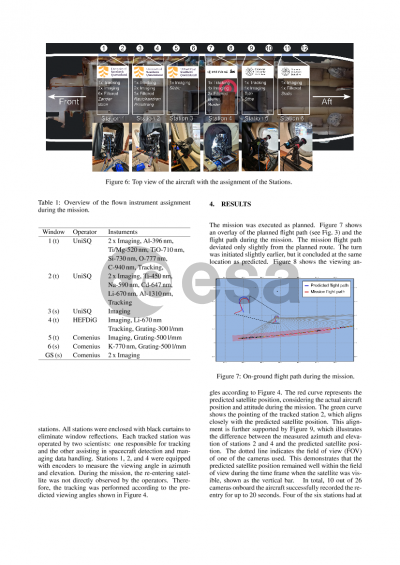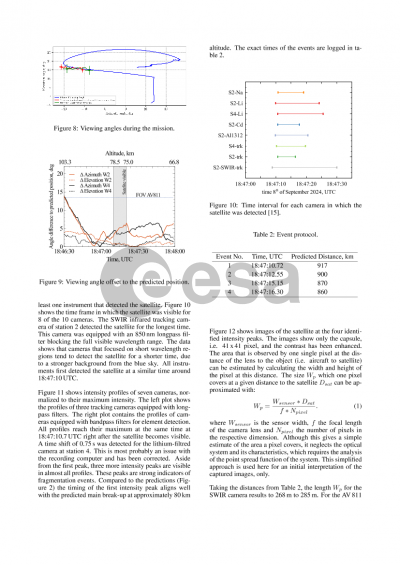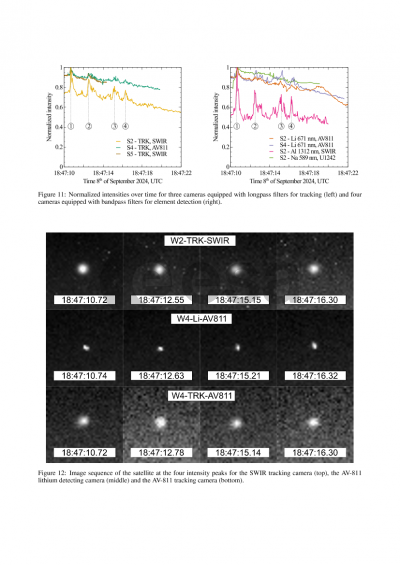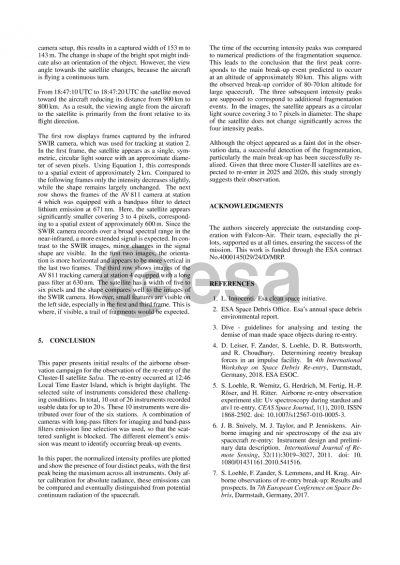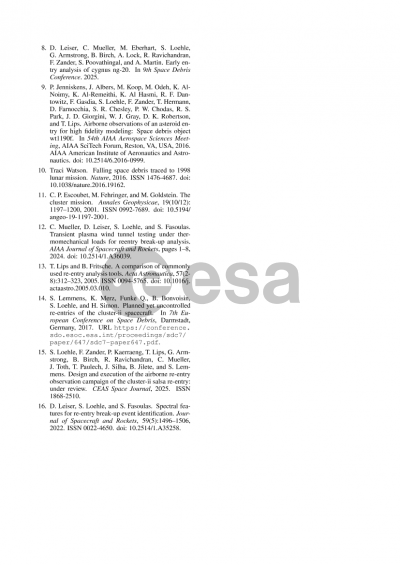Document details
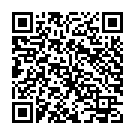
Abstract
After the end of their operations, the four Cluster-II satellites were directed to re-enter the Earth atmosphere. The re-entry of the first satellite, named Salsa, was scheduled for the 8th of September 2024 at 18:47 UTC over the South Pacific, approximately 2000 km west of Easter Island, with the aim of an airborne observation. On site, the team faced the challenging situation of an entry under broad daylight conditions. Hyperschall Technologie Göttingen (HTG) provided re-entry fragmentation predictions based on ESA-collected data about the spacecraft’s orbit. The key objectives of the campaign were to detect the main break-up event, reconstruct the satellite's trajectory, and identify individual fragments.
This paper presents the mission approach, including preparation, prediction, flight mission details, and initial results. Due to the highly eccentric orbit, the entry predictions were particularly challenging, resulting in a wider spread of potential entry corridors. Therefore, the very last prediction, made only 52 hours before the actual entry, was used to design an appropriate flight path for the aircraft. A concept was developed to adapt to the bright daylight conditions by using multiple imaging cameras equipped with longpass filters to block a significant portion of sunlight. Additionally, bandpass filters were employed to specifically capture emission lines of characteristic elements that appear during re-entry. The setup included a total of 26 cameras distributed over six stations on board a Falcon 900 business jet. All cameras were time-synchronized to a GPS time server, and the pointing of all tracked stations was recorded in azimuth and elevation. The mission was successful. Multiple cameras detected the entry for up to 25 seconds at around 18:47:10 UTC.
Preview
